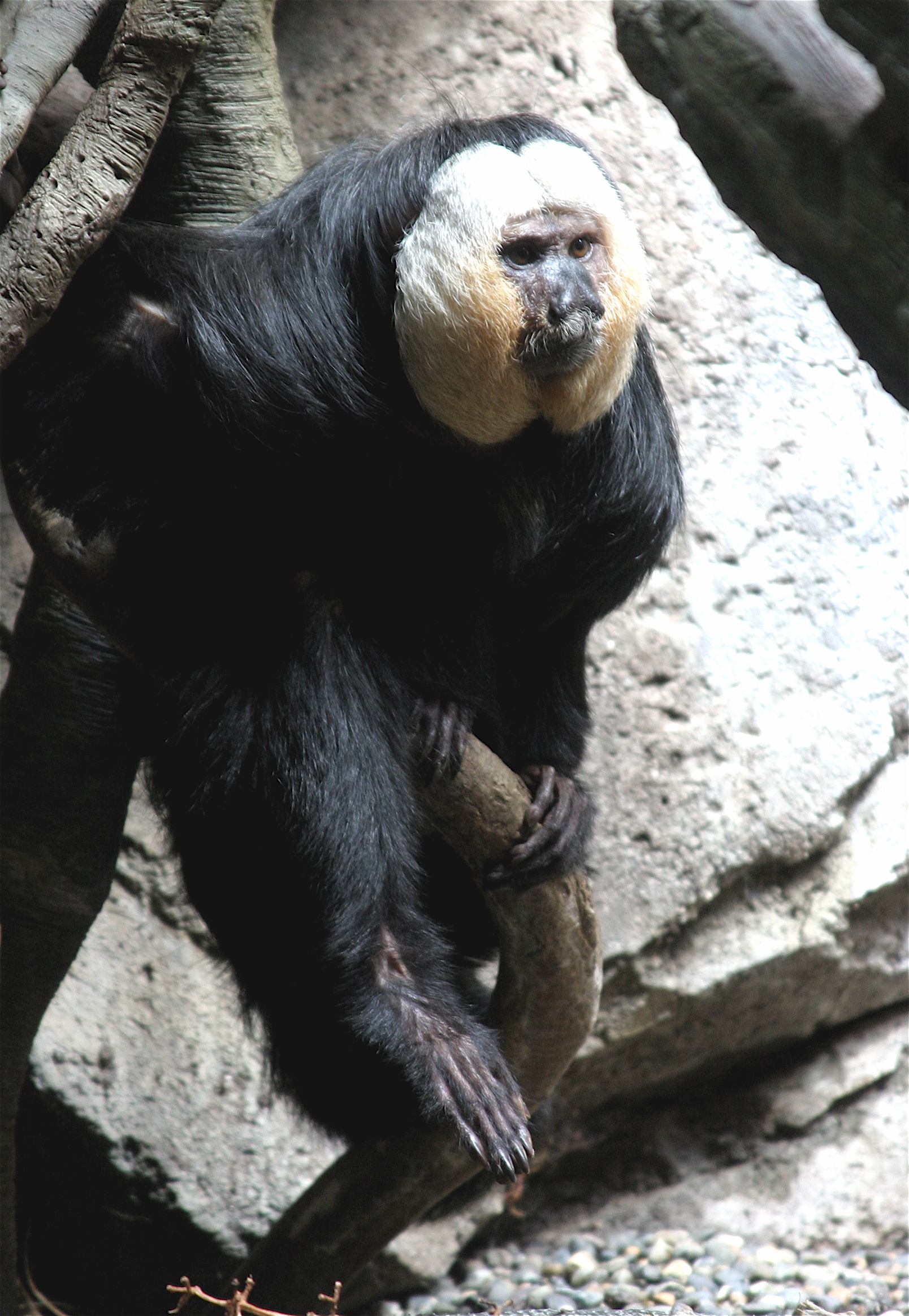- Saki monkey
image_width = 200px
image_caption =White-faced Saki ("Pithecia pithecia")
regnum =Animal ia
phylum =Chordata
classis =Mammal ia
ordo =Primate s
familia =Pitheciidae
subfamilia =Pitheciinae
genus = "Pithecia"
genus_authority = Desmarest, 1804
type_species = "Simia pithecia"
type_species_authority = Linnaeus, 1766
subdivision_ranks =Species
subdivision = "Pithecia pithecia" "Pithecia monachus" "Pithecia irrorata" "Pithecia aequatorialis" "Pithecia albicans"Sakis, or saki monkeys, are any of several
New World monkey s of the genus "Pithecia". They are closely related to thebearded saki s of genus "Chiropotes".Sakis' range includes northern and central
South America , extending from the south ofColombia overPeru in northernBolivia and into the central part ofBrazil .Sakis are smaller monkeys with long, bushy tails. Their furry, rough skin is black, grey or reddish-brown colored depending upon the species. The faces of some species are naked, but their head is hooded with fur. Their bodies are adapted to life in the trees, with strong hind legs allowing them to make far jumps. Sakis reach a length of 30 to 50 cm, with a tail just as long, and weigh up to 2 kg.
Sakis are diurnal animals. They live in the trees of the rain forests and only occasionally go onto the land. They mostly move on all fours, sometimes running in an upright position on the hind legs over the branches, and sometimes jumping long distances. For sleeping they roll themselves cat-like in the branches. They are generally very shy, cautious animals.
Sakis live in family federations, which consist of parents and their offspring, with mated pairs usually forming lifelong pair bonds. They are territorial animals, defending their territory in relation to other families. Sakis know a set of communication possibilities: while shrill cries or bird-like twitter serves as a connection among family members, a loud roar serves to warn other animals off their territory.
Sakis are
omnivore s. They eat fruits, leaves, flowers, insects, and small vertebrates, such as rodents and bats.Mating is non-seasonal, and can happen any time during the year. After approximately 150 to 180 day gestation, females bear single young. The young are weaned after 4 months, and are fully mature in 3 years. Their life expectancy is up to 30 years.
Classification
* Genus "Pithecia"
**White-faced Saki , "Pithecia pithecia"
**Monk Saki , "Pithecia monachus"
***Geoffroy's Monk Saki , "Pithecia monachus monachus"
***Miller's Monk Saki , "Pithecia monachus milleri"
**Rio Tapajós Saki , "Pithecia irrorata"
**Equatorial Saki , "Pithecia aequatorialis"
**White-footed Saki , "Pithecia albicans"References
*MSW3 Groves|pages=147-148
External links
* [http://pin.primate.wisc.edu/factsheets/links/pithecia Primate Info Net "Pithecia" Factsheets]
Wikimedia Foundation. 2010.

